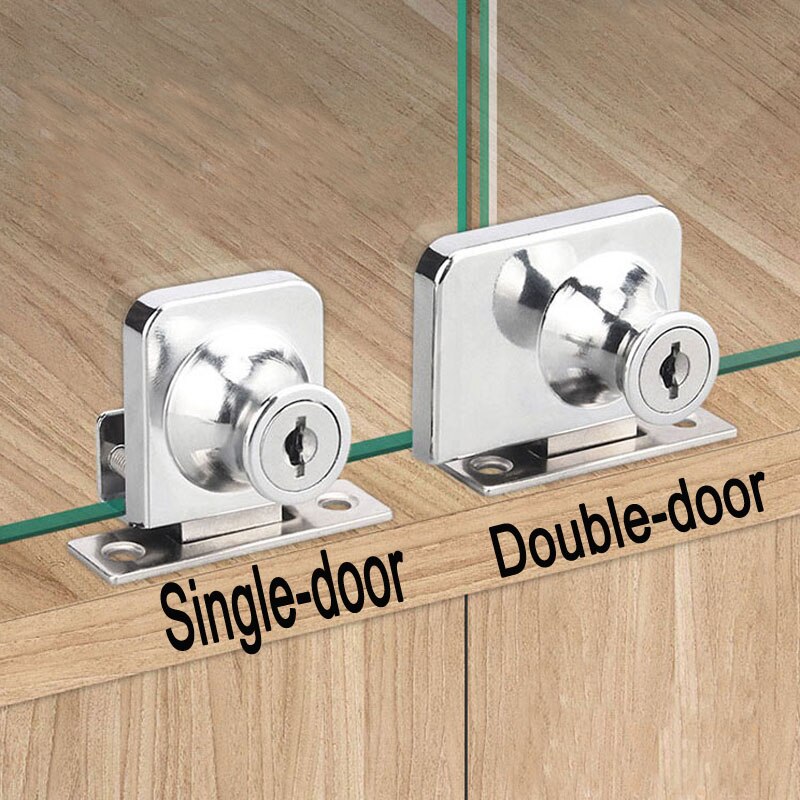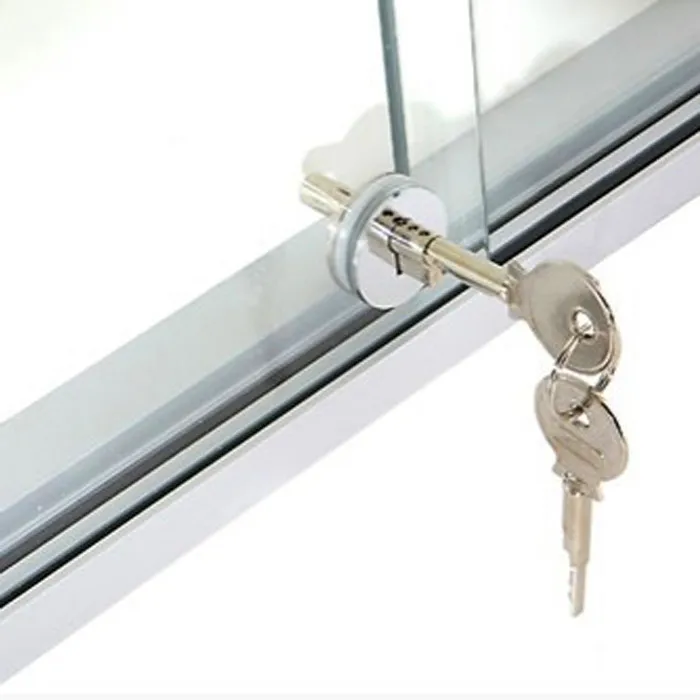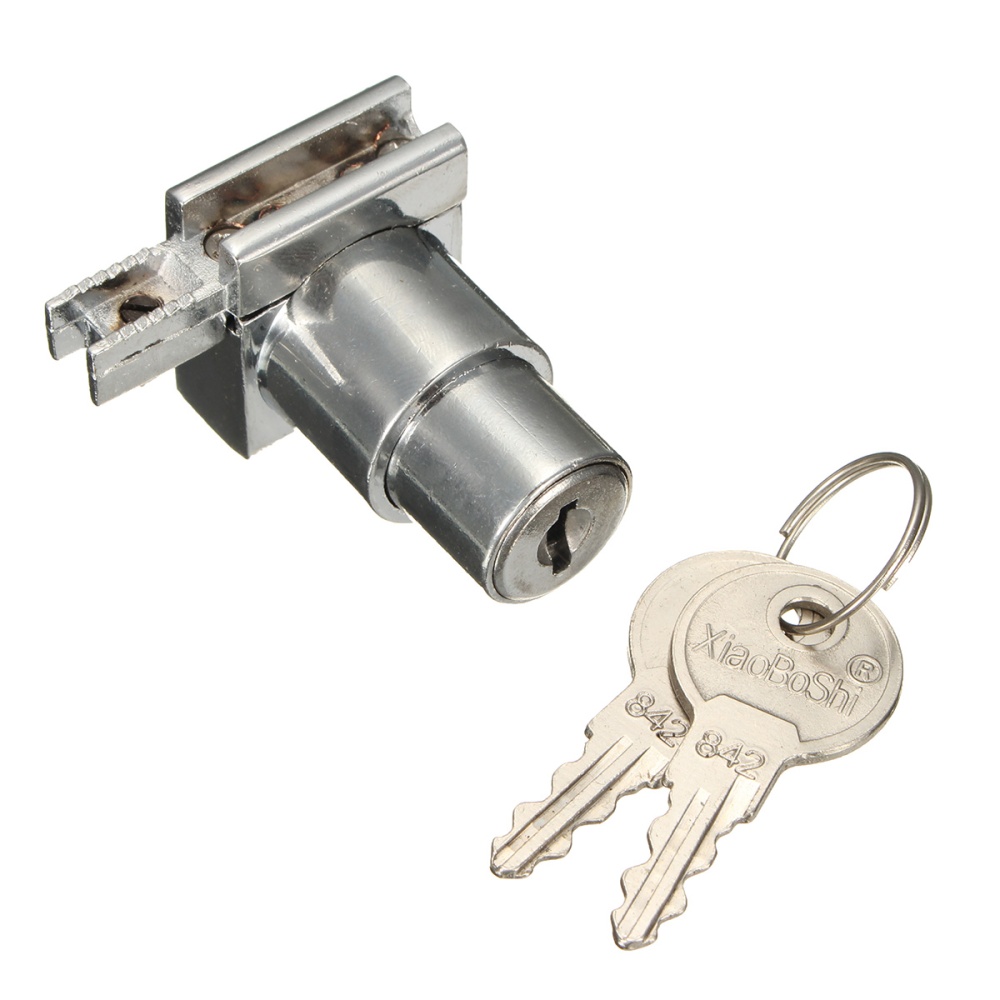Understanding Sliding Glass Display Cabinet Locks

Sliding glass display cabinet locks are crucial security features that safeguard valuable items from theft and damage. They are essential in various settings, including retail stores, museums, and homes, where protecting valuable assets is paramount.
Types of Sliding Glass Display Cabinet Locks
Sliding glass display cabinet locks come in various types, each with its own advantages and disadvantages.
- Keyed Locks: These locks utilize a traditional key for opening and closing. They are generally affordable and easy to install, but they can be susceptible to lock picking and key duplication.
- Combination Locks: These locks use a combination of numbers to unlock, offering greater security than keyed locks as they eliminate the need for keys. However, they can be more challenging to operate and require remembering the combination.
- Electronic Locks: These locks use electronic keys or keypads to unlock, offering advanced security features such as access control and audit trails. They are typically more expensive than traditional locks but provide enhanced protection and flexibility.
- Push-Button Locks: These locks use a simple push-button mechanism for opening, often found in display cabinets with quick access needs. However, they offer minimal security and can be easily bypassed.
Installation and Usage of Sliding Glass Display Cabinet Locks

Installing and using sliding glass display cabinet locks is a straightforward process that enhances the security of your valuable possessions. This guide provides step-by-step instructions and practical tips to ensure a secure and functional installation.
Choosing the Right Lock
Selecting the appropriate lock for your cabinet depends on the size and weight of the door.
* Size: Measure the width of your cabinet door to ensure the lock fits correctly. Consider the space available for the lock mechanism and handle.
* Weight: The weight of the door determines the type of lock needed. Heavier doors require more robust locks with higher holding strength.
* Lock Type: Choose from various lock types based on your needs, including:
* Sliding Bolt Locks: Suitable for lightweight doors and offer a simple, affordable solution.
* Cam Locks: Provide increased security and are commonly used for heavier doors.
* Keyed Locks: Offer enhanced security with a key-operated mechanism.
* Combination Locks: Require a specific code for unlocking and provide additional security.
* Material: Consider the material of the lock, opting for durable materials like stainless steel or brass for long-lasting performance.
* Finish: Select a finish that complements the style of your cabinet.
Installation Process
The installation process varies depending on the chosen lock type.
* Sliding Bolt Locks:
* Mark the Location: Measure and mark the desired location for the lock on the cabinet door and frame.
* Drill Holes: Drill pilot holes for the screws and bolts.
* Install the Lock: Secure the lock mechanism to the door and the strike plate to the frame.
* Test the Lock: Test the lock’s functionality and adjust as needed.
* Cam Locks:
* Prepare the Door: Drill a hole for the cam lock’s cylinder and a slot for the cam.
* Install the Cylinder: Secure the cylinder to the door and attach the cam to the lock mechanism.
* Install the Strike Plate: Attach the strike plate to the frame.
* Test the Lock: Ensure the cam engages properly with the strike plate.
* Keyed Locks:
* Mark the Location: Determine the location for the lock and mark it on the door.
* Drill Holes: Drill pilot holes for the lock’s mounting screws.
* Install the Lock: Secure the lock mechanism to the door.
* Install the Strike Plate: Attach the strike plate to the frame.
* Test the Lock: Check that the key operates smoothly.
* Combination Locks:
* Mark the Location: Measure and mark the desired location for the lock on the cabinet door.
* Drill Holes: Drill pilot holes for the lock’s mounting screws.
* Install the Lock: Secure the lock mechanism to the door.
* Set the Combination: Follow the manufacturer’s instructions to set the combination.
* Test the Lock: Verify that the lock functions correctly with the chosen combination.
Usage and Maintenance, Sliding glass display cabinet locks
Proper usage and maintenance ensure the longevity and effectiveness of your sliding glass display cabinet locks.
* Regular Cleaning: Clean the lock mechanism and surrounding areas regularly to prevent dust and debris accumulation.
* Lubrication: Apply a light lubricant to the lock mechanism to ensure smooth operation.
* Inspect for Damage: Regularly inspect the lock for any signs of wear or damage and replace components as needed.
* Handle with Care: Avoid excessive force when locking and unlocking the cabinet door.
* Avoid Overtightening: Do not overtighten the screws and bolts, as this can damage the lock mechanism.
* Use the Correct Key: Always use the correct key for your lock to prevent damage.
* Store Keys Securely: Keep your keys in a safe and secure location.
Security Considerations with Sliding Glass Display Cabinet Locks

While sliding glass display cabinet locks provide an extra layer of security, it’s crucial to understand their limitations and how to mitigate potential vulnerabilities. Choosing the right lock, understanding its capabilities, and implementing proper security measures are essential for safeguarding valuable items.
Vulnerabilities and Mitigation
Sliding glass cabinet locks, while effective, can still be vulnerable to certain methods of entry. Understanding these vulnerabilities is essential for implementing effective mitigation strategies.
- Sliding Mechanism: The sliding mechanism itself can be a weak point. If the lock is not properly installed or if the track is compromised, the door could be forced open.
- Lock Picking: Some locks, especially lower-quality ones, can be susceptible to lock picking.
- Lock Bumping: A technique known as lock bumping uses specially designed keys to manipulate the lock’s tumblers, potentially unlocking it.
- Forced Entry: In extreme cases, the glass itself could be broken to gain access.
To mitigate these vulnerabilities, consider the following:
- Choose high-quality locks: Invest in locks made from durable materials with a robust design and multiple locking points.
- Install locks properly: Ensure proper installation according to manufacturer instructions. A poorly installed lock is less effective.
- Reinforce the track: Use metal plates or other reinforcement methods to secure the track and prevent it from being compromised.
- Consider additional security measures: Combine locks with other security measures like alarms, motion sensors, or security cameras.
- Regular inspections: Regularly inspect the lock and its surrounding components for signs of wear or damage.
Lock Types and Security Levels
Different lock types offer varying levels of security. Understanding the strengths and weaknesses of each type can help you choose the most appropriate option for your needs.
- Single-point locks: These locks have a single locking point, which can be easier to pick or bump. They offer basic security and are typically found on less expensive cabinets.
- Multi-point locks: These locks have multiple locking points, making them more resistant to forced entry. They are a good choice for high-value items.
- Deadbolt locks: Deadbolt locks offer a high level of security as they engage directly into the frame, making them difficult to force open.
- Electronic locks: Electronic locks use a combination of electronic mechanisms and physical keys. They can provide additional security features like access control and audit trails.
Importance of Regular Inspection and Maintenance
Regular inspection and maintenance are crucial for ensuring the effectiveness of your sliding glass display cabinet locks.
- Inspect the lock: Check for any signs of wear, damage, or corrosion.
- Test the lock: Regularly test the lock to ensure it’s functioning properly.
- Lubricate the lock: Apply a light lubricant to the moving parts of the lock to prevent rust and ensure smooth operation.
- Address any issues: If you notice any problems with the lock, have it repaired or replaced immediately.
Sliding glass display cabinet locks are crucial for protecting valuable items, and similar considerations apply when choosing security measures for a glass door gun cabinet. Both types of cabinets require reliable locks to deter unauthorized access and ensure the safety of their contents.
For sliding glass display cabinets, consider features like keyless entry, tamper-resistant mechanisms, and robust construction to provide optimal security.
Sliding glass display cabinet locks are essential for protecting valuable items, especially in homes with limited storage space. A well-designed display cabinet can enhance the aesthetics of a home, and for those seeking a practical and stylish solution, a 2 bedroom with ensuite laundry offers a functional and modern advantage.
With a secure display cabinet, you can showcase cherished possessions while keeping them safe from prying eyes and potential theft.
